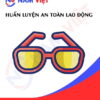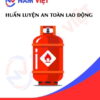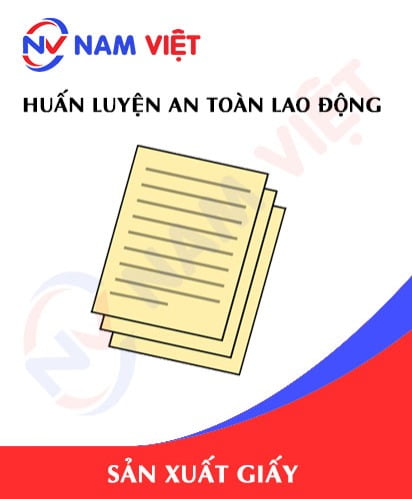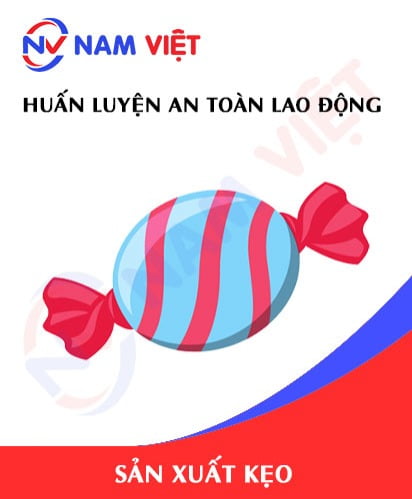Occupational Safety Training for Animal Feed Manufacturing
99,000 ₫
Note: The above price is calculated per person and may vary depending on the number of participants in the course and market fluctuations. For more accurate pricing support, please refer to the price list or contact our consulting staff directly.
Occupational safety is an important issue in animal feed manufacturing factories and needs to be addressed promptly to ensure the health and safety of workers and enhance the reputation of businesses. The Occupational Safety Training course is one of the effective solutions to raise awareness of accident prevention for workers involved in animal feed manufacturing.
Table of Contents
Toggle1. Overview of Animal Feed
a. What is Animal Feed?
- Animal feed refers to types of food produced for livestock, poultry, and other domesticated animals. Animal feed includes main ingredients such as grains, fish meal, bone meal, soybeans, brewer’s grains, soybean meal, and essential vitamins and minerals necessary for animal growth and development. Animal feed is usually produced following specialized processes to ensure adequate nutrition and safety for the animals.
- The animal feed industry in Vietnam has been developing strongly in recent years, especially in 2020 and 2021. Vietnam is one of the countries with a developed agricultural sector, so the animal feed production industry is considered potential and promising for the future. The demand for animal feed increases due to livestock development and rising consumption of poultry, pork, beef, fish, shrimp, milk, eggs, etc.
- Animal feed manufacturing companies in Vietnam are increasingly being invested in and developed to meet market demand. Many foreign companies are also interested in investing in this sector in Vietnam. However, the industry faces several challenges, including high production costs, risk of animal disease contamination, price competition, etc. Therefore, companies are striving to improve product quality, apply advanced technology to enhance productivity, and reduce production costs.

b. Animal Feed Manufacturing Machinery
The machinery used for animal feed production includes:
- Raw material grinders: used to crush and grind basic ingredients such as brewer’s grains, bran, corn, wheat, soybeans, and other plant materials into fine powder.
- Mixers: used to mix the ground ingredients together to create a feed mixture.
- Pellet presses: used to compress the feed mixture into pellets for easier use and transportation.
- Dryers: used to dry feed or ingredients before mixing.
- Packaging machines: used to pack feed into bags for storage and transportation.
- Quality control machines: used to inspect feed quality before use.
These machines are typically used in feed manufacturing factories to increase productivity, improve product quality, and reduce production costs.

c. Prominent Animal Feed Manufacturers
There are many animal feed manufacturers in Vietnam, among which notable companies include:
- VinaFeed Joint Stock Company: One of the leading animal feed producers in Vietnam, offering diverse and high-quality products produced under a closed process from raw materials to finished products.
- Anco Feed Joint Stock Company: A high-quality animal feed producer in Vietnam, providing diverse products to meet the needs of different animal species.
- C.P Feed Co., Ltd: Headquartered in Thailand but present in Vietnam since 1993. C.P produces high-quality feed products, especially for pigs.
- Dabaco Feed Co., Ltd: A pioneer in producing animal feed using ingredients sourced from rural areas, supporting rural economic development while ensuring product quality.
- Hien Hau Feed Co., Ltd: A reputable animal feed manufacturer in Vietnam with high-quality, diverse products produced using modern technology.
d. Specific Roles in Animal Feed Factories
Group 1
- Chief Executive Officer, Deputy CEO, and department heads in the animal feed factory.
Group 2
- Safety officers: manage factory safety, design safety procedures, supervise and ensure employees comply with safe working procedures.
Group 3
- Raw material procurement: Raw materials for feed production include grains, bran, soybeans, meat, bones, fish, seaweed, vitamins, minerals, flavorings, etc. Factories source materials from reputable suppliers to ensure feed quality.
- Raw material processing: Materials transported to the factory are stored, sorted, separated, ground, milled, mixed, and processed into feed components.
- Feed production: Components are placed into mixers to create a homogeneous mixture. The mixture is then pressed or milled to produce feed pellets or powder.
- Packaging: Feed is packed in standard bags to protect products from dust and moisture, keeping feed fresh and safe for use.
- Transportation and storage: Feed is transported to distributors and retail stores nationwide. Factories also have warehouses to store products for future sales.
- Quality inspection: Feed factories often have laboratories and modern equipment to test feed quality, including checking nutritional content, moisture, acidity, microorganisms, and harmful substances.
Group 4
- Office work, support, sales, and marketing.
- Production management, quality management, human resource management, material management, and financial accounting management.
- Feed formulation design: Nutrition experts and feed technicians design feed formulas suitable for specific animal species.

e. Types of Animal Feed
Animal feed is categorized according to animal species and their developmental stages. Common types include:
- Pig feed: includes brewer’s grains, corn, soybeans, bran, fish meal, vitamins, and minerals.
- Poultry feed: includes corn, wheat, fish meal, soybeans, bran, brewer’s grains, vitamins, and minerals.
- Fish feed: includes fish meal, corn, wheat, soybeans, bran, brewer’s grains, and minerals.
- Dog and cat feed: includes poultry, beef, fish, soybeans, bran, and vitamins and minerals.
- Dairy cattle feed: includes corn, bran, soybeans, dried grass, and minerals.
- Beef cattle feed: includes corn, bran, soybeans, straw, and minerals.
- Goat and sheep feed: includes dried grass, fresh grass, brewer’s grains, bran, soybeans, and minerals.
These are common types of feed. Depending on rearing conditions and animal species, manufacturers create feed formulas suitable for each case.
2. Overview of Occupational Safety Training for Animal Feed Production
This article focuses on Group 3, as Group 3 directly participates in the production process and faces the highest occupational safety risks. For other groups, refer to here.
a. What is Group 3 Occupational Safety Training?
- Group 3 Occupational Safety Training consists of sessions providing awareness on occupational accident prevention for workers.
- This safety training helps workers recognize and prevent hazards, reducing the risk of occupational accidents during work.
REGISTER FOR OCCUPATIONAL SAFETY TRAINING
b. Training Duration
Initial safety training duration:
- Total training time is at least 24 hours, including examination time.
- 8 hours of theory on safety and labor hygiene policies and laws
- 8 hours of theory on basic occupational safety and hygiene knowledge
- 4 hours of theory on specialized training content
- 2 hours of practical training on specialized content
- 2 hours of theoretical testing at the end of the course
The training center schedules multiple sessions depending on workers’ availability. Typically, there are 6 sessions over 3 days, assuming continuous learning time is arranged by the production company.
Periodic safety training duration:
- Before the occupational safety card expires, workers must undergo periodic occupational safety training, with the duration of periodic training being at least 50% of the initial training duration.
Explanation: Total duration of periodic occupational safety training is at least 12 hours, including examination. After completing the periodic training and passing the test, workers will have their occupational safety cards reissued.
c. Training Content
| No. | TRAINING CONTENT | TRAINING TIME (HOURS) | |||
| Total | Including | ||||
| Theory | Practice | Exam | |||
| I | Policies and laws on occupational safety and hygiene | 8 | 8 | 0 | 0 |
| 1 | Overview of legal documents on occupational safety and hygiene. | 6 | 6 | ||
| 2 | Standards and technical regulations on occupational safety and hygiene. | 1 | 1 | ||
| 3 | Specific regulations of state management agencies on occupational safety and hygiene when building, expanding, or renovating facilities for production, use, storage, inspection of machines, equipment, materials, and substances with strict safety and hygiene requirements. | 1 | 1 | ||
| II | Basic occupational safety and hygiene knowledge | 8 | 8 | 0 | 0 |
| 1 | Basic knowledge of hazards and harmful factors in the workplace. | 4 | 4 | ||
| 2 | Methods to improve working conditions. | 1 | 1 | ||
| 3 | Safety culture in production and business. | 1 | 1 | ||
| 4 | Rights and obligations of employers and employees; policies on occupational safety and hygiene; roles and responsibilities of safety networks and safety officers. | 1 | 1 | ||
| 5 | Rules on occupational safety and hygiene, safety signs, guides, using safety equipment, personal protective equipment; first aid skills for occupational accidents, occupational disease prevention. | 1 | 1 | ||
| III | Specialized training content | 6 | 4 | 2 | 0 |
| Comprehensive knowledge of machines, equipment, hazardous substances; risk analysis, evaluation, and management; safe working procedures with machines, equipment, and substances with strict safety and hygiene requirements. | 6 | 4 | 2 | ||
| IV | Final safety training assessment | 2 | 2 | 0 | 0 |
| Total | 24 | 22 | 2 | ||
See more training content of 6 groups
d. Occupational Safety Card
After completing occupational safety training and passing the examination, workers will be issued an occupational safety card (commonly known as Group 3 safety certificate).
Group 3 safety cards display information such as full name, date of birth, specific job and working environment, training duration, red seal, and signature confirming course completion.
According to regulations on issuing safety cards stated in Clause 2 of Article 24 of Decree 44/2016/ND-CP, there are two cases:
- If the employer and employee have a labor contract, the employer must sign, stamp, and seal the safety card for the Group 3 worker after they complete the training and pass the exam.
- If the worker is freelance or seasonal, without a labor contract, the training unit must sign, stamp, and seal the safety card after the worker completes the training and passes the exam.

3. Identifying Hazards in Animal Feed Production
Animal feed production involves several hazards, including:
- Animal feed production may involve the use of various chemicals and gases to create the products. Improper use or prolonged storage of these chemicals can lead to fire or explosion.
- Chemicals used in animal feed production can cause poisoning in humans if protective equipment is not worn properly or if they are used incorrectly.
- During production, workers are exposed to high-temperature materials and machinery. Without full protective gear or compliance with work procedures, there is a risk of severe burns.
- Operating machinery, handling products, and moving materials all pose occupational accident risks if procedures are not followed and protective equipment is not used properly.
- The animal feed production environment can promote the growth of bacteria, mold, and insects. Failure to maintain cleanliness in the workplace or using contaminated raw materials may lead to health risks for workers.
4. Common Occupational Accidents in Animal Feed Production
Common occupational accidents in animal feed production may include:
- Cuts and injuries from knives or feed grinders: Employees must ensure all equipment is functioning properly and regularly maintained to prevent accidents.
- Food poisoning: Chemicals and pesticides may be used to eliminate pathogens in feed. However, excessive or improper use can cause food poisoning for both producers and consumers.
- Toxic gases: During production, toxic gases such as CO2, H2S, NH3, etc., may be released. Improper ventilation can affect workers’ health.
- Fire and explosion: For grain feed products, drying processes are commonly used. If procedures are not followed correctly, there is a risk of fire or explosion.
5. Safety Measures for Participating in Animal Feed Production
To ensure safety during animal feed production, the following measures can be applied:
- Conduct training and occupational safety training for employees on work safety, procedures, and equipment use.
- Use protective equipment such as masks, gloves, helmets, safety glasses, anti-slip shoes, and other protective devices.
- Perform regular inspection, maintenance, and repair of equipment to ensure safe operation.
- Implement fire and explosion prevention measures, including checking electrical systems, insulation, and chemical explosion prevention.
- Comply with food safety and production regulations to ensure products are safe for animals and users.
- Provide full personal protective equipment for employees and ensure correct usage.
- Ensure safety measures when transporting, loading, and storing animal feed.
- Conduct risk assessment and emergency response planning for production, transportation, and feed usage.
- Manage, monitor, and inspect product quality while complying with food safety regulations.
- Enhance employees’ responsibility and awareness regarding occupational and food safety.
- Periodically perform work environment monitoring in factories, collect and analyze harmful factors, and adjust them to reduce risks, preventing occupational diseases.

6. Benefits of Occupational Safety Training for Animal Feed Production
An Toan Nam Viet provides enterprises with the following benefits after completing occupational safety training according to Decree 44/2016/NĐ-CP on Occupational Safety and Hygiene:
- Workers can identify potential occupational hazards and take preventive measures to avoid accidents.
- Enterprises can implement risk prevention measures in production, operation, and maintenance processes.
- Minimize costs associated with safety risks in labor.
- Continuous production increases labor productivity and product quality.
- Comply with occupational safety laws, avoiding legal risks.
- Enhance company reputation and professionalism, boosting brand image.
Nam Viet’s training courses are solutions to prevent external hazards, enabling individuals to avoid dangers that could cause injury or even death.
REGISTER FOR OCCUPATIONAL SAFETY TRAINING SERVICE
7. Customer Feedback After Completing Animal Feed Production Safety Training
An Toan Nam Viet has many years of experience accompanying numerous enterprises in Vietnam, particularly in the southern provinces. This responsibility is extremely valuable to Nam Viet, which is why our Occupational Safety Training is becoming increasingly professional. Our growth is driven by positive feedback and suggestions from the enterprises we serve. Below are testimonials from our valued partners.
See more customer interviews after using services of An Toan Nam Viet
8. Occupational Safety Training Capacity of An Toan Nam Viet
An Toan Nam Viet is a reputable and high-quality occupational safety training center in Vietnam. Our training sessions are conducted continuously at production workshops, factories, and construction sites nationwide (63 provinces in Vietnam).
REGISTER FOR OCCUPATIONAL SAFETY TRAINING SERVICE
Occupational Safety Training License
- An Toan Nam Viet has been inspected and certified by the Department of Occupational Safety under the Ministry of Labor – Invalids and Social Affairs, confirming that we meet all requirements to operate occupational safety and hygiene training. This further strengthens our occupational safety training capability.

Training Materials and Lectures
- Before being included in our occupational safety training courses, training materials are reviewed to ensure they are accurate and effective.
- Our instructors follow teaching methods standardized by An Toan Nam Viet, based on research and practical experience in occupational safety and hygiene training, to ensure maximum knowledge absorption by learners.
Facilities
- Controlling classroom factors that affect training enhances teaching efficiency and knowledge retention for learners.
- Our training facilities include spacious classrooms that meet standards for area, lighting, training equipment, and more.
9. Nationally Reputable Occupational Safety Training Center
At An Toan Nam Viet, we prioritize professional dedication to occupational safety training. For us, teaching workers how to protect themselves ensures they have a safe foundation in their livelihood and contributes to nation-building.
To ensure effective training, we meticulously prepare every detail, from tools, equipment, teaching materials, to documents, audio, and lighting.
Our occupational safety instructors are experts with many years of experience. They even conduct research to identify hazards across industries and teach methods to prevent them.
Lectures are based on practical experience and delivered in an engaging, easy-to-understand manner. This allows learners to feel comfortable and absorb knowledge effectively. All content strictly follows Decree 44/2016/NĐ-CP.
Learners gain knowledge of hazard prevention and self-protection, applying it appropriately in real work situations.
Our training center proudly provides professional and reputable occupational safety training with the following advantages:
- Competitive training costs while ensuring high quality.
- Flexible training schedules adapted to company production needs.
- Fast and compliant procedures for issuing occupational safety training certificates.
- Experienced instructors with extensive industry expertise.
- Controlled classrooms to enhance teaching efficiency and learners’ knowledge absorption.
- Lectures tailored to occupational safety practices in enterprises.
- An Toan Nam Viet works professionally and dedicatedly to provide accurate and timely support to clients.

10. Additional References for Occupational Safety Training in Animal Feed Production
- Occupational Safety Materials for Animal Feed Production
- Occupational Safety Training Materials
- Occupational Safety Training Test Bank
- Animal Feed Production Safety Quiz
- Download Slides for Animal Feed Production Safety Training
1 review for Occupational Safety Training for Animal Feed Manufacturing
No comments yet















namchinh.haiphong341
Dịch vụ huấn luyện an toàn lao động rất tốt nhé, giảng viên dạy rất sinh động dễ hiểu!